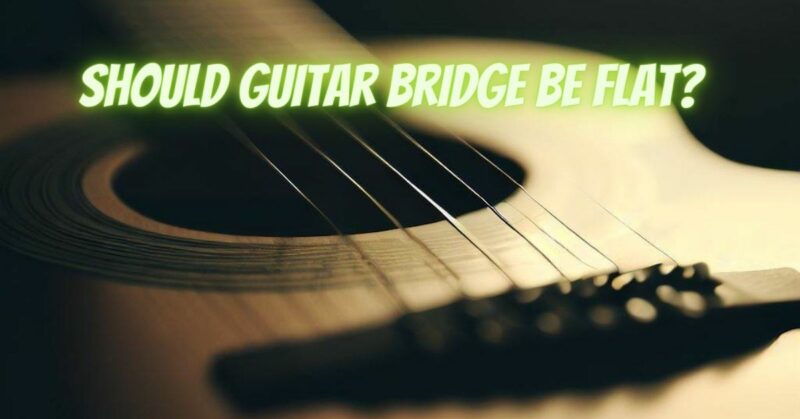The guitar bridge, a vital component that anchors and adjusts the strings, plays a pivotal role in shaping the tone, playability, and overall performance of an instrument. One topic of debate and discussion among guitarists is whether the bridge should be flat or have a curved profile. In this article, we will delve into the concept of the guitar bridge, explore various bridge types, and discuss whether the bridge should be flat or not.
The Role of the Guitar Bridge
Before we address the question of whether the bridge should be flat, let’s understand the fundamental functions of a guitar bridge:
- String Anchoring: The bridge holds the guitar strings securely in place at the body end. The strings pass over the bridge saddle, which is a small piece that raises the strings above the bridge, and they are usually secured through the bridge pins or other mechanisms.
- Intonation Adjustment: The bridge saddle can be adjusted to fine-tune the intonation of the guitar. Proper intonation ensures that the instrument plays in tune across all frets.
- Transfer of Vibrations: The bridge is responsible for transmitting the vibrations generated by the strings to the guitar’s soundboard (top), which amplifies the sound. The design and material of the bridge can significantly affect the guitar’s tone and resonance.
Types of Guitar Bridges
There are several types of guitar bridges, each with its own characteristics. Two primary types of bridges are commonly used:
- Flat-Bottom Bridge: In this design, the bridge saddle is flat, and the strings rest on it evenly. This configuration is found on many acoustic guitars, particularly those with a pin bridge.
- Curved-Bottom Bridge: Some bridges feature a curved or compensated saddle. The curve is designed to accommodate the differences in string gauge and tension, compensating for the variations in string length to improve intonation.
Should the Guitar Bridge Be Flat?
The choice between a flat or curved bridge depends on various factors, including the type of guitar, playing style, and personal preferences:
- Flat Bridge: A flat bridge is often preferred on classical and many steel-string acoustic guitars. It provides simplicity and ease of adjustment. However, achieving precise intonation may require careful attention to saddle placement.
- Curved Bridge: Guitars with a curved bridge, often seen on electric guitars, are designed for improved intonation accuracy. The curvature compensates for variations in string thickness and tension. It’s particularly beneficial for players who use a variety of string gauges and require precise tuning across the entire fretboard.
- Personal Preference: Ultimately, the choice between a flat or curved bridge can come down to personal preference. Some players may find that a flat bridge suits their playing style and tonal preferences, while others may favor the enhanced intonation provided by a curved bridge.
- Guitar Type: The type of guitar you play also influences the choice of bridge. Classical and folk guitars often feature flat bridges, while many electric guitars use curved bridges for enhanced intonation control.
Whether the guitar bridge should be flat or curved is not a one-size-fits-all answer. It depends on the guitar type, playing style, and individual preferences. The design and curvature of the bridge saddle can significantly impact intonation accuracy and overall playability. When choosing a guitar, take into account the type of bridge it features and how it aligns with your musical goals. Ultimately, the best bridge design for you is the one that complements your playing style and allows you to achieve the tones and intonation accuracy you desire.


